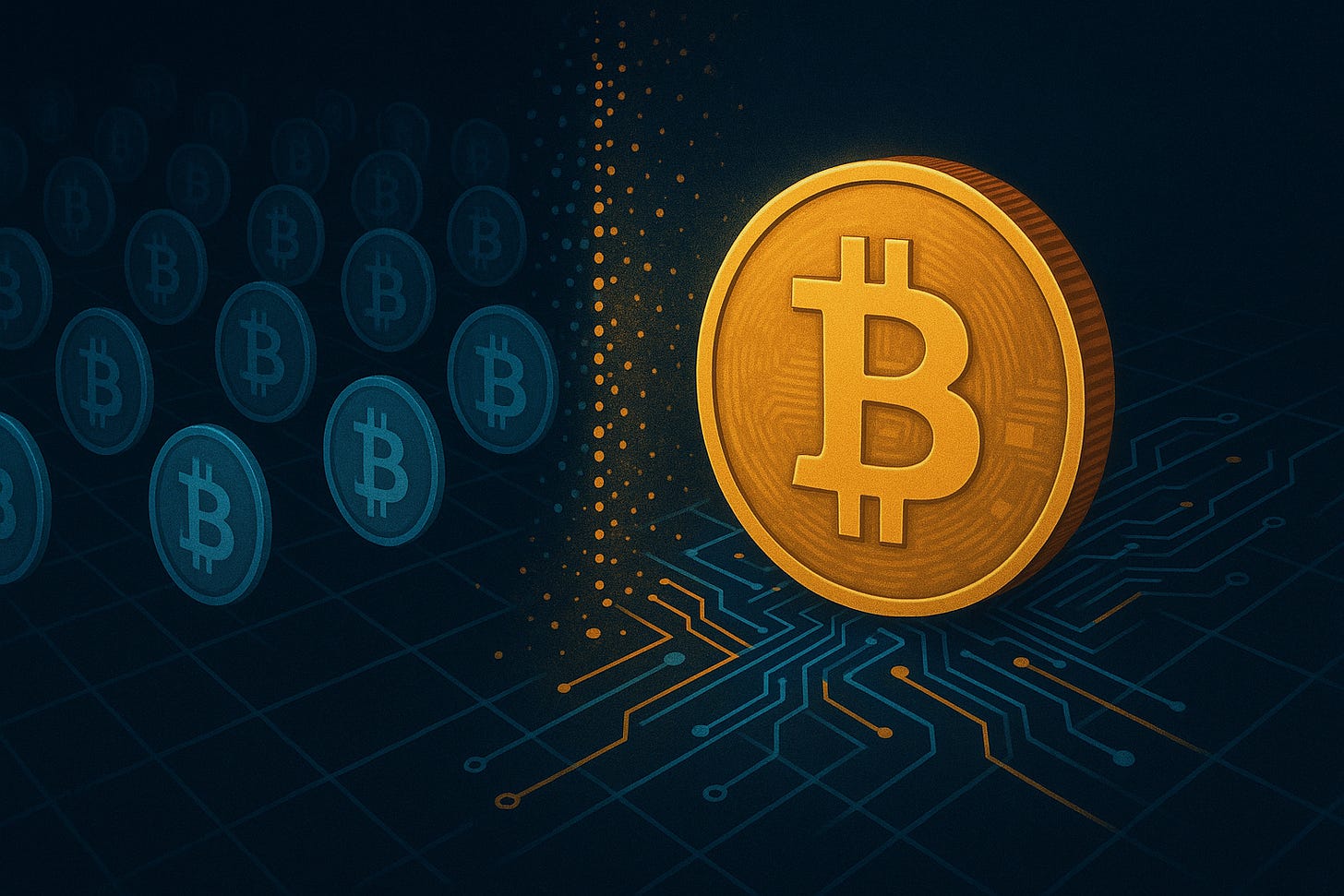Bitcoin Is Digital Scarcity
How Bitcoin turns computation into real, enforceable scarcity
Bitcoin is digital, but it is not virtual. That is the core claim Gigi makes while tracing how money behaves in computer worlds and in our own. In games and platforms, “currencies” appear and disappear at the whim of their creators. They are lines in a database that can be printed, farmed, or switched off. Bitcoin, in contrast, anchors digital objects to physical reality through proof-of-work and fixed rules that no ruler can bend.
First, separate “digital” from “virtual.” Digital means information encoded as bits. Virtual means simulated by software, without independent existence. A digital radio is still a radio. But a radio inside a video game is virtual. Most online monies are virtual in this sense. They depend on admins and servers. As long as an authority can change balances or rules, scarcity is only theatrical.
Game histories show how this breaks. Ultima Online saw inflation and rule tweaks as designers battled exploits. Diablo II accidentally minted a currency in the Stone of Jordan, then watched it collapse when players duplicated items. Second Life ran a sizable economy, yet Linden Lab could and did intervene with policy changes that cascaded into bank runs. In each case someone could print more, players could farm more, or the arena itself could be shut or reshaped. This is the “print, farm, serve” test for bad money.
Bitcoin passes that test by design. No one can print more than the schedule allows. The difficulty adjustment prevents efficient farming since adding more machines does not speed up issuance over time; it only spreads reward among more competitors and strengthens security. Most crucially, Bitcoin is not served from a master server. Anyone can run a node, verify the entire history, and enforce the rules they choose. The shared world emerges from overlapping local validation rather than a central broadcaster.
Proof-of-work is what ties this digital system to physics. Hashes that satisfy the target are improbable enough that they cannot be wished into existence. They require energy and time. There are no shortcuts, no progress bar to exploit. The costliness is an unforgeable signal that orders events and protects the past. Computation becomes a bridge from math to matter. This is why a valid block is “more real” than ordinary text on a screen. It carries evidence of physical effort.
Scarcity is therefore not simulated. It is enforced by the same stubborn limits that govern thermodynamics. Only 21 million bitcoin will ever exist. Issuance declines predictably. More energy will not create more coins, only tougher competition and greater security. Since anyone can instantiate and validate the system, Bitcoin does not rely on an arena that can be seized or switched off in one place. As long as a single honest node survives and can reconnect with others, the timechain endures.
Gold was natural money in the physical world. It is scarce, but heavy and slow. Virtual currencies are light and fast, but their scarcity depends on trust in administrators. Bitcoin combines the strengths without the weaknesses. It is a digital commodity whose scarcity is rooted in physics, whose rules are enforced at the edges, and whose arena is the overlapping consensus of many independent peers. That is why Bitcoin is digital scarcity, not virtual make-believe. 21 million. Absolute limit.


